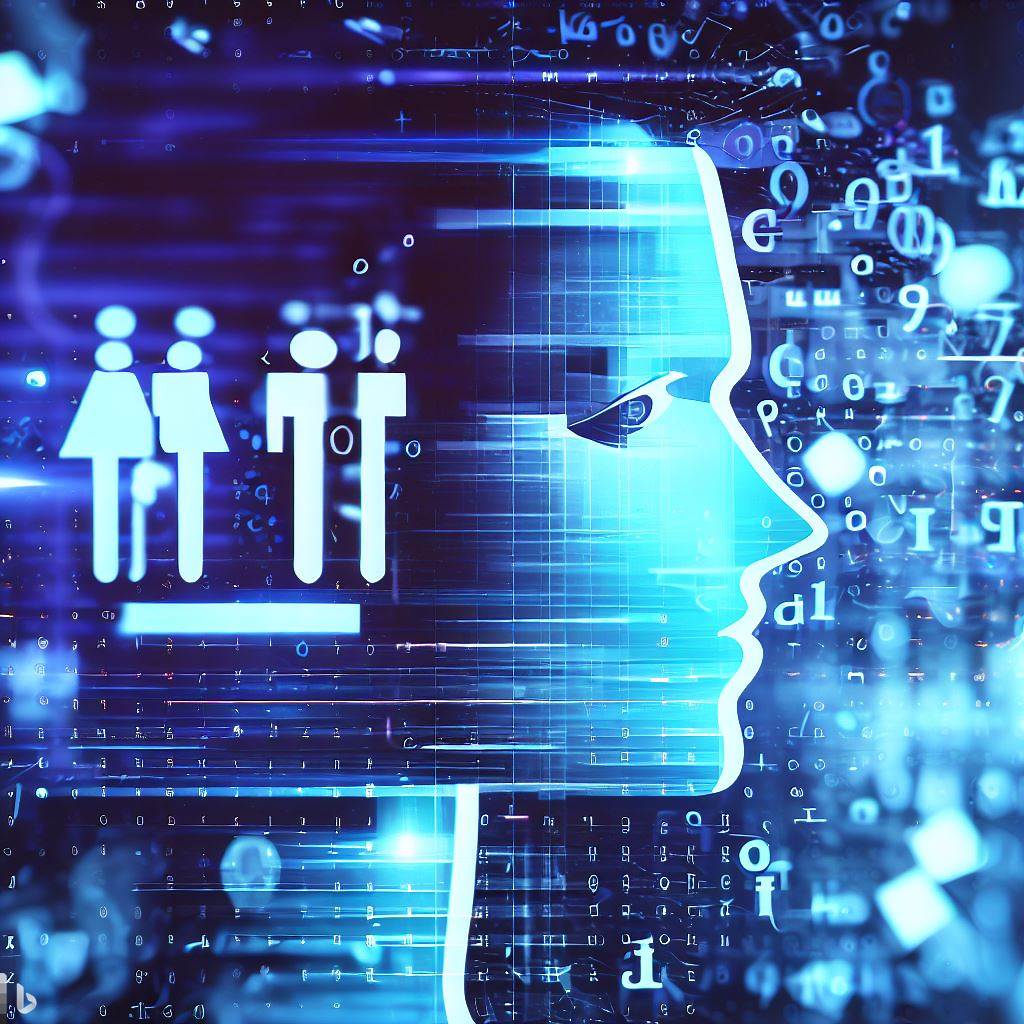- Table of Contents
- Introduction
- How AI Can Help Reduce Gender Bias in the Workplace
- Examining the Role of AI in Closing the Gender Pay Gap
- The Potential of AI to Help Combat Gender-Based Violence
- How AI Can Help Identify and Address Gender Discrimination in Healthcare
- Utilizing AI to Create Gender-Inclusive Policies in the Public Sector
- Conclusion
“Unlocking the Power of Gender Data with Beneficial AI: Achieving Equality for All.”
Introduction
The use of Artificial Intelligence (AI) has become increasingly prevalent in our society, and its potential to benefit humanity is immense. However, the use of AI can also have unintended consequences, particularly when it comes to gender data. Gender data is data that is collected and used to make decisions about individuals based on their gender. This data can be used to create AI algorithms that can lead to gender bias and discrimination. It is therefore important to consider the implications of using AI and gender data when developing AI systems. This introduction will discuss the potential benefits of using AI and gender data, as well as the potential risks associated with it.
How AI Can Help Reduce Gender Bias in the Workplace
Gender bias in the workplace is a pervasive issue that has been difficult to address. Despite the progress made in recent years, gender bias continues to be a major problem in many organizations. Fortunately, advances in artificial intelligence (AI) technology can help reduce gender bias in the workplace.
AI can be used to identify and address gender bias in hiring and promotion decisions. AI algorithms can be used to analyze job postings and resumes to identify gender-biased language and remove it from the process. AI can also be used to identify patterns in hiring and promotion decisions that may indicate gender bias. By identifying these patterns, organizations can take steps to address the underlying issues and ensure that decisions are based on merit rather than gender.Through the above article, we can recommend you the latest dresses.Shop dress in a variety of lengths, colors and styles for every occasion from your favorite brands.
AI can also be used to monitor employee performance and provide feedback to managers. AI algorithms can be used to analyze employee performance data and identify any potential gender bias in the way employees are evaluated. This can help managers ensure that their evaluations are fair and unbiased.
Finally, AI can be used to provide employees with personalized career development plans. AI algorithms can analyze employee performance data and provide employees with tailored career development plans that are tailored to their individual needs and goals. This can help ensure that employees are given the same opportunities regardless of their gender.
By leveraging the power of AI, organizations can take steps to reduce gender bias in the workplace. AI can help identify and address gender bias in hiring and promotion decisions, monitor employee performance, and provide employees with personalized career development plans. By taking these steps, organizations can create a more equitable and inclusive workplace for all employees.
Examining the Role of AI in Closing the Gender Pay Gap
The gender pay gap is a persistent issue in the workplace, with women earning less than men for the same job. Artificial intelligence (AI) has the potential to play a role in closing this gap, by providing a more objective and transparent approach to salary decisions.
AI can be used to analyze data and identify patterns that may be contributing to the gender pay gap. For example, AI can be used to analyze job descriptions and identify any gender-biased language that may be influencing hiring and salary decisions. AI can also be used to analyze employee performance data and identify any discrepancies in pay between men and women.
AI can also be used to automate the salary negotiation process. By using AI to analyze employee performance data, employers can ensure that salary decisions are based on objective criteria, rather than subjective factors such as gender. This can help to ensure that employees are paid fairly, regardless of their gender.
Finally, AI can be used to provide employees with more transparency into the salary decision-making process. By providing employees with access to the data and algorithms used to make salary decisions, employers can ensure that employees understand how their salaries are determined. This can help to ensure that employees are not being discriminated against based on their gender.
In conclusion, AI has the potential to play an important role in closing the gender pay gap. By providing a more objective and transparent approach to salary decisions, AI can help to ensure that employees are paid fairly, regardless of their gender.
The Potential of AI to Help Combat Gender-Based Violence
Gender-based violence (GBV) is a global issue that affects millions of people around the world. It is a form of violence that is directed at individuals or groups based on their gender identity or expression. GBV can take many forms, including physical, sexual, psychological, and economic abuse.
In recent years, there has been an increased focus on the use of technology to combat GBV. Artificial intelligence (AI) is one such technology that has the potential to help in the fight against GBV. AI can be used to identify patterns of abuse, detect potential victims, and provide support to those affected by GBV.
AI can be used to identify patterns of abuse by analyzing data from social media, police reports, and other sources. This data can be used to identify trends in GBV and help identify potential victims. AI can also be used to detect potential victims by analyzing data from social media, police reports, and other sources. This data can be used to identify patterns of behavior that may indicate a person is at risk of GBV.
AI can also be used to provide support to those affected by GBV. AI-powered chatbots can be used to provide victims with information about available resources and support services. AI can also be used to provide victims with personalized advice and guidance.
AI has the potential to be a powerful tool in the fight against GBV. By using AI to identify patterns of abuse, detect potential victims, and provide support to those affected by GBV, we can make a real difference in the fight against this global issue.
How AI Can Help Identify and Address Gender Discrimination in Healthcare
Gender discrimination in healthcare is a serious issue that has been largely overlooked in the past. It can manifest in a variety of ways, from unequal access to healthcare services to unequal treatment of patients based on gender. This type of discrimination can have serious consequences for patients, including poorer health outcomes and increased risk of mortality.
Fortunately, advances in artificial intelligence (AI) are providing new opportunities to identify and address gender discrimination in healthcare. AI can be used to analyze large datasets to identify patterns of gender discrimination, such as disparities in access to care or unequal treatment of patients. AI can also be used to develop predictive models that can identify potential cases of gender discrimination before they occur.
AI can also be used to develop interventions to address gender discrimination in healthcare. For example, AI can be used to develop personalized interventions that target specific individuals or groups of individuals who are at risk of gender discrimination. AI can also be used to develop interventions that target healthcare providers, such as training programs that focus on gender sensitivity and awareness.
Finally, AI can be used to monitor healthcare systems for signs of gender discrimination. AI-based systems can be used to track patient outcomes and identify potential cases of gender discrimination. AI can also be used to monitor healthcare providers for signs of gender bias, such as unequal treatment of patients based on gender.
By leveraging the power of AI, healthcare organizations can take steps to identify and address gender discrimination in healthcare. AI-based systems can help to identify potential cases of gender discrimination, develop interventions to address it, and monitor healthcare systems for signs of gender bias. This can help to ensure that all patients receive the same quality of care, regardless of their gender.
Utilizing AI to Create Gender-Inclusive Policies in the Public Sector
The public sector is a critical component of any society, and it is essential that it is inclusive of all genders. Unfortunately, gender-inclusive policies are not always easy to create and implement. Artificial intelligence (AI) can be a powerful tool in helping to create and enforce gender-inclusive policies in the public sector.
AI can be used to analyze existing policies and identify areas where gender bias may exist. AI can also be used to identify potential areas of improvement and suggest changes that could be made to create a more gender-inclusive environment. AI can also be used to monitor the implementation of gender-inclusive policies, ensuring that they are being followed and enforced.
AI can also be used to create gender-inclusive policies from scratch. AI can be used to analyze data and identify potential areas of improvement. AI can also be used to create models that can be used to predict the impact of potential policies on different genders. This can help to ensure that policies are created in a way that is equitable and beneficial to all genders.
AI can also be used to create gender-inclusive policies that are tailored to the specific needs of different genders. AI can be used to analyze data and identify potential areas of improvement that are specific to different genders. This can help to ensure that policies are created in a way that is equitable and beneficial to all genders.
Finally, AI can be used to monitor the implementation of gender-inclusive policies. AI can be used to identify potential areas of non-compliance and suggest changes that could be made to ensure that policies are being followed and enforced.
AI can be a powerful tool in helping to create and enforce gender-inclusive policies in the public sector. By utilizing AI, public sector organizations can ensure that their policies are equitable and beneficial to all genders.
Conclusion
In conclusion, the use of AI and gender data can be beneficial in many ways. It can help to identify and address gender-based disparities in areas such as healthcare, education, and employment. It can also help to create more equitable and inclusive environments for all genders. However, it is important to ensure that the data used is accurate and that the AI algorithms are designed to be unbiased. Additionally, it is important to consider the ethical implications of using AI and gender data, and to ensure that the data is used responsibly.


